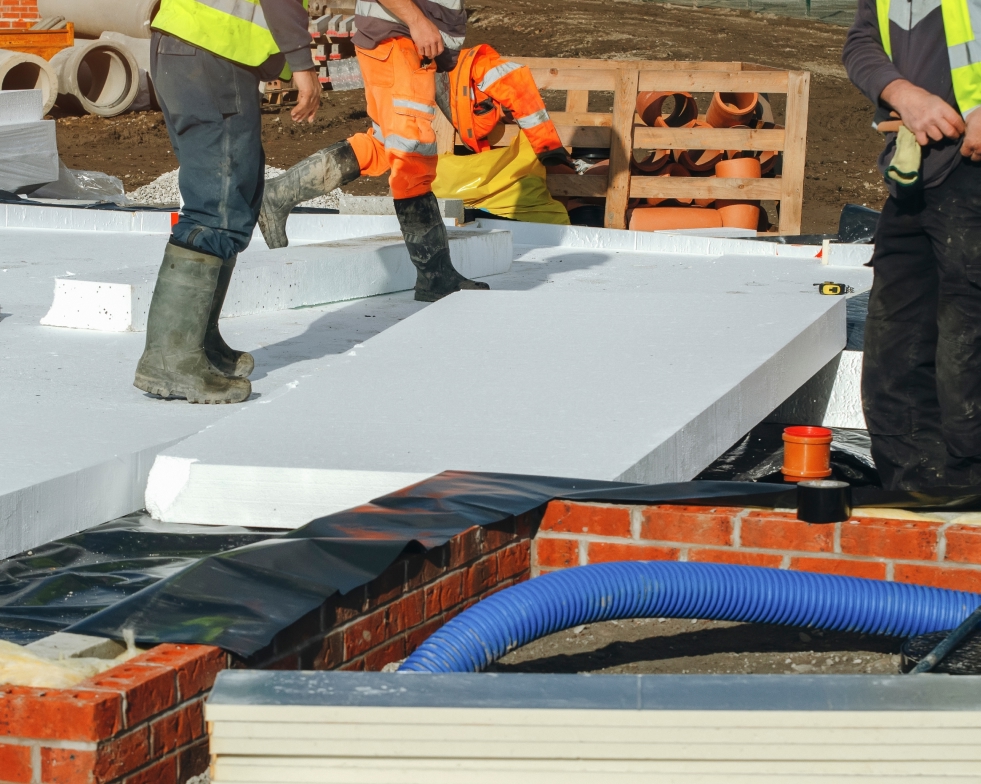Managing Risks with EPS
Expanded Polystyrene Panels (EPS), a type of Insulated Sandwich Panel (ISP), have been widely used in Australian construction for over 50 years due to their lightweight, durability, and cost-effectiveness. However, in the past 15 years, there has been a significant rise in property losses associated with EPS, which is classified as a highly flammable B3 product under DIN 4102.
EPS is often sandwiched between steel facings and used behind drywall, sheet metal, or concrete.
Notable incidents, such as the railcar fire at Düsseldorf International Airport and a fire at the Browns Ferry Nuclear Power Plant, highlight the risks associated with this material. These incidents have led to increased apprehension among insurance companies, resulting in soaring premiums and stricter regulations, coining the term “EPS risk.”
While sandwich panels do not initiate fires themselves, they are often involved in high-risk areas like kitchens, with fire spread linked to inadequate fire risk management. Effective prevention and containment of early fire spread is essential.


Count on Us for EPS Insurance
2. Fires under EPS panel ceilings escalate quickly; as the EPS melts, it contributes to the fire, evaporating and fueling the flames.
3. Fires can spread rapidly throughout the panels, roofing, and walls, often breaching panel seams.
4. Fires ignited by EPS walls and ceiling panels alone can cause significant destruction, including the failure of major steel roof beams.
5. Firefighting efforts are often limited due to the rapid fire spread and structural collapse risks.
6. Conducting a thorough risk assessment of the area is essential. If this is difficult due to the nature of your business, reconsider the use of high-risk panel systems.
However, for many businesses, the distinction between high- and low-risk environments is often unclear. Financial risk becomes a key factor in driving insurers’ decisions. Fire safety measures play a critical role in these scenarios, and the facility managers’ ability to understand and implement these practices is essential.
When fire safety practices are properly applied, the likelihood of flammable sandwich panels contributing to a fire is significantly reduced.
A 10m gap between timber or plastic pallets and sandwich panels is strongly recommended.
If a forklift is on-premises, the battery should be appropriately distanced unless the panel system has at least 60 minutes of fire resistance.
Automatic fire suppression systems should be attached to all heating and cooking equipment if appropriate.
Panel faces should be mechanically attached to the supporting structure in order to prevent the chance of detachment if a fire occurred.
Electrical cables in close proximity of sandwich panels should always be encased within a metal conduit.
Smoke vents, sprinklers, and electrical equipment near the panels should be tested at least annually.
An effective Risk Management Plan should include:
- Hot work and cold work permit controls Electrical maintenance programs, including thermographic imaging
- Regular housekeeping, panel assessments, and repairs
- Ammonia contamination measures (e.g., exhaust fans)
- Business continuity plans
- Spot protection for hazardous systems
- Staff training on potential risks
By prioritising these elements, businesses can significantly reduce hazards and enhance their EPS insurance eligibility.
Fortunately, alternatives are available, such as completely non-flammable panels made from fibreglass “wool” and polyisocyanurate insulation foam, which has passed extensive fire testing and is certified by Factory Mutual (USA) or the Loss Prevention Council (LPC).
However, incomplete disclosures about EPS often lead to gaps in understanding, putting the onus on brokers to educate their clients.
Today
Contact Matrix Insurance today on (08) 6555 7742 to speak with an insurance broker who can help you.

